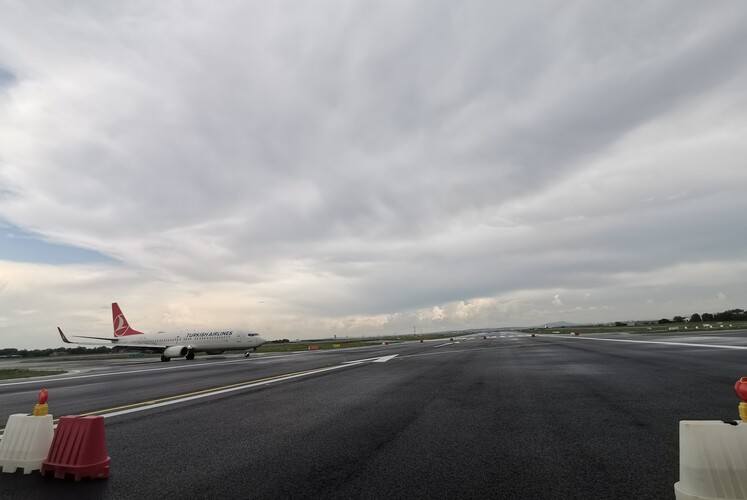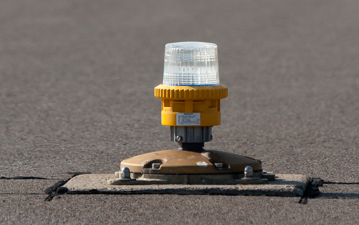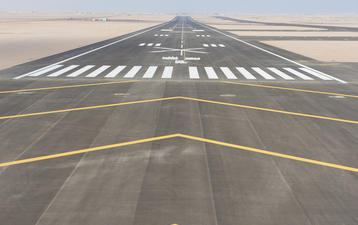Contingency Runway Use: Ensuring Operational Continuity
Belgrade Airport
airsight has developed a concept of operations and an action plan for Belgrade Airport to define the procedures for transitioning from main runway operations to contingency runway operations.
Single runway airports often face the challenge of managing the required scheduled or unplanned works or events on the runway, while making sure flight operations are only minimally disrupted. A planned schedule of the activities to be done on the runway (e.g. carrying out maintenance works during the night non-operative hours) is not always sufficient to guarantee the continuity of runway operations due to factors that cannot be controlled, for example a detected anomaly during night inspection works that results in required repair work and consequent flight delays, or an aircraft incident which blocks the runway, implying a closure.
For this reason, some of these airports are putting efforts and resources into developing contingency solutions in order to respond effectively and efficiently in case of both planned and unplanned events. One of the alternatives consists of equipping an actual parallel taxiway of the aerodrome with the pertinent infrastructure to have the ability to serve as a contingent runway when required.
In this regard, airsight since many years assists airports in the study of the viability and challenges of these kinds of operations, aiming for the optimisation of operational processes to enhance airport capacity in compliance with national and international regulations, as well as providing support in the development of the corresponding plans and procedures to transition to the mode of contingency operations.
The aim of this particular project was to provide the airport with a functional and complete guide for the transition to operations on the contingent runway in case of non-serviceability of the main runway, highlighting the required changes to be considered.
airsight was therefore commissioned to elaborate a transition plan with the requirements that should be addressed when operations have to be transferred from the main runway to the contingency runway, considering the scenarios regarding planned and unplanned events. Some of the areas impacted by changes are:
Certification and Compliance of the new state after the transition, considering also exemptions and safety assessments
Aeronautical Information Management, in order to notify in a timely manner any change in publications (AIP, NOTAMs)
Coordination and Collaboration between all involved stakeholders, taking into account aspects such as aerodrome capacity, ATC or MET for both the transition execution and the return to normal operations
Aerodrome Infrastructure, especially in terms of the visual aids and navigation aids that should be checked and activated/deactivated depending on the mode of operation, as well as the means for denotation of closed areas
Aerodrome Operations, since the adequate changes in all relevant Standard Operating Procedures (SOPs) should be addressed regarding the transition of runway operations. This includes obstacle management, emergency plan, vehicle operations, etc
Human Resources, Competency and Training, in order to ensure the preparation and briefing of personnel and associated stakeholders
All these aspects should be considered when the transition is scheduled, thus including a longer planning time frame with sequenced actions to be implemented proactively, but also when the transition is unplanned, following the immediate actions reactively after the closure of the main runway.

An important feature that was evaluated and discussed with the client throughout the different stages of the project was the contingency runway designation. Even though in normal operations the contingency runway will function as a taxiway, it was concluded that it was beneficial to designate it as a runway (thus having only runway naming and not taxiway naming, and appearing in the AIP as a two-runway airport with two modes of operation depending on which the active runway is).
As a support for the management of the changes in the aerodrome infrastructure, airsight provided CAD drawings for each mode of operation in which the actual visual aids and taxi routes are depicted. In addition, a checklist of the visual aids status was elaborated for each mode of operation, in order to establish clearly which visual aids should be visible / not visible in link to the corresponding section of the CS ADR-DSN.
airsight also developed action-based checklists as chronologically sequenced sets of process steps to be taken by the airport operator and the main stakeholders to be involved as the basis for the planned/unplanned transition. The intention of the checklists is to facilitate a quick but detailed and comprehensive review of items that define the process of the transition.
If your airport is facing similar challenges and you want to ensure smooth, safe and compliant contingency operations, airsight is here to support you. From developing tailored concepts of operations to implementing detailed transition plans, we help airports worldwide strengthen their operational resilience.
Get in touch with our Aerodrome Safety and Operations experts or contact us directly to discuss how we can support your specific needs.
Key Facts



